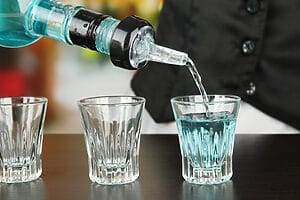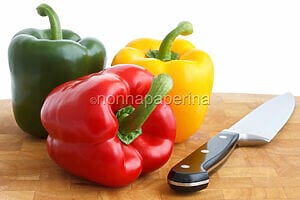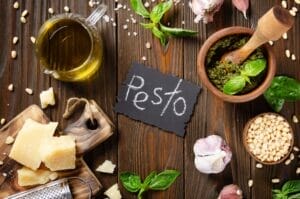A bartender’s equipment for making excellent cocktails

Why invest in bartending supplies?
In this guide, we’ll talk about a bartender’s equipment, that is, all those tools, accessories, and products that help prepare cocktails, mocktails, and, in general, drinks that involve the interaction of multiple ingredients.
Before delving into the descriptions of the many barman ‘tools’, let me clarify a few things. First of all, in terms of flavour as well as appearance and aesthetics, cocktails have nothing on mocktails. Though they aren’t as fancy as actual cocktails, mocktails are nevertheless very tasty and can only be distinguished by their lack of alcohol. The liqueur component is replaced with ingredients capable of replicating its effects in terms of consistency and flavour.
Secondly, the purchase of bartending tools should not be reserved only for those who manage a bar or venue. Of course, the latter derive an opportunity to grow their business by giving personality and offering high-quality service. However, the same is true for homemade cocktails; in this instance, having access to high-quality barware enables you to wow your guests with a special evening of food and drink.
What is the difference between a barman and a bartender?
Another useful clarification concerns the terminology, or rather, the classification of the various roles. A certain confusion hovers around the terms barman and bartender. Many consider them synonymous, but in reality, they correspond to “quite” different meanings.
The barman is the professional who takes care of cocktails, i.e., the one who prepares the drinks behind the counter, giving creativity and spectacularity to his gestures. The bartender, on the other hand, is a fairly generic term that can include not only the barman but also the simple bartender, i.e., the person who prepares coffee, cappuccinos, milk, and herbal teas.
The bartender, in turn, should not be confused with the flair bartender, a profession that corresponds to the “juggling bartender,” that is, that professional who does not limit himself to the preparation of cocktails but does so in a spectacular, rapid way and is capable of entertaining the public.
What is bartending equipment?
Let’s now see what bar equipment, i.e., all those tools that a self-respecting barman must know how to use and which make the difference for catering activities of any kind.
Due to the fact that supplies for bartenders and barmen are increasingly offered in ordinary stores and online, you may experience some confusion when confronted with seemingly odd objects. In this context, it makes sense to enumerate the essential bartender accessories, describe their purposes, and offer some tips for optimal usage.
The metal pour, speed, shaker, strainer, spoon, and muddler will be the specific topics I’ll cover. I will also talk about two of the most controversial bartending accessories, as they are often the subject of misunderstandings: the blender (which is not a simple blender) and the stirrer.
Pour metal and speed
The speed (or, more accurately, “speed bottle”) and the metal pour are two of the most crucial pieces of bartending equipment. Their function is to enable very accurate liquid transfers from bottle to glass while also enabling quantity measurements.
The metal pour functions as a kind of “decanter cap.” It attaches to the bottle as if it were a cap to which a sort of long and narrow spout is connected. Each type of bottle has its own metal pour, so a good barman always has a couple available.
The speed bottle is designed differently, even though it serves the same purpose. It is essentially a container with a spout cover. It can be filled with any sort of liquid and used for rapid and accurate decanting. Since the speed bottle does not need to be applied to each bottle individually, it can be used to achieve uniform decanting times.
It’s really easy to use the metal pour and speed bottle. But the word of wisdom is to get started practicing right away. That is, knowing the volume of liquid moved in millilitres per second at a certain inclination. This will allow you to create perfectly balanced cocktails and ensure that you are always completely aware of the quantities decanted.
Among the bartending essentials are the shaker and the strainer
The shaker is among the most famous bar tools of all. In a certain sense, the act of shaking the drink, perhaps decanting it immediately afterwards, is part of the collective imagination. The fame of this tool is well deserved, as it is truly essential bartending equipment. The shaker allows for a full amalgamation of the ingredients and a uniform texture. Using the shaker is easy and requires only a little manual skill. The advice, in this case, is not to go beyond twenty seconds of “shaking,” as there is a risk of creating drinks that are too opaque and also dispersing the aromas.
It must be said, however, that the shaker should not always be used. For example, if the cocktails need to be bright and almost transparent, they should be mixed by hand with the appropriate spoon. However, using a shaker makes the drinks cloudy, giving the cocktail a mushy appearance.
The strainer, a metal strainer with a medium mesh, is the shaker’s most devoted buddy. It sits on top of the shaker so that the drink can be poured without the ice. Obviously, the strainer should only be used if the cocktail does not include ice, or rather only includes ice cubes placed directly in the glass.
The spoon and the muddler
Let’s now talk about the spoon and the muddler, which are also essential in any respectable bartender’s equipment.
The spoon has a confined end and an extremely long, thin handle. It is meant to facilitate “gentle” mixing of the ingredients rather than “shaking.” The best bartenders always practice a few rotations of the spoon to further enhance the mixture, even after using the shaker. Another unusual feature of the spoon is its drill-point handle, sometimes known as the “spiral.” This form allows for easier rotation while also guaranteeing a more secure hold.
But in terms of the muddler, it’s a device like the pestles used for mortars. In order to ensure higher precision and fit the frequently small frame of spectacles, it is typically oblong in shape. To make shredding easier, the “pounding side,” or the surface in touch with the contents, usually has a composite texture.
The muddler is one of the most useful bartender items when cocktails involve the use of herbs, fruit, and perhaps vegetables during the preparation of the drink and not as final garnishes. The ice and grenadine solutions are often crushed with a muddler to give the cocktail a smoother feel.
What is a bar blender?
Let’s now talk about the blender, a bartender’s piece of equipment that is often at the centre of misunderstandings. For example, many consider it to be a simple blender. It’s true; its purpose is to blend.
The blender is really more accurate and slightly less potent. Rather than pulps with a range of consistencies, it is ideal for blending substances with varying textures and consistencies, such as different juices. It must be noted, nonetheless, that it is not appropriate for pasty things (like boiled potatoes) or leathery elements (like tubers).
Cocktail preparation can be sped up significantly with the blender, especially if a lot of ingredients are needed.
When does one use a stirrer?
And what about the stirrer? Well, it can actually be considered a synonym for spoon. In fact, we are talking about a very thin spoon with a long handle, whose purpose is to mix drinks with extreme delicacy. If we really want to be picky, we can say that the spoons marked with the term “stirrer” differ in an even thinner circumference, a longer handle, and above all, the absence of the spiral motif.
The stirrer—or spoon, if you’d rather—is put directly in the glass, especially when you want to make the preparation of the cocktail spectacular, offering a clear vision of the mixing process to the customer who will consume the drink.
All rights reservedCOULD IT BE INTERESTING FOR YOU

How to peel bell peppers, the complete guide
The main characteristics of bell peppers Bell peppers are among the most popular vegetables, as seen by the large number of recipes that include them, despite the fact that they are not always easy...

Pesto recipes and how to best preserve them
The peculiarities of classic pesto How is pesto preserved? It's not as clear-cut as you may think. Additionally, although the recipe is straightforward, it has certain unique characteristics,...
















